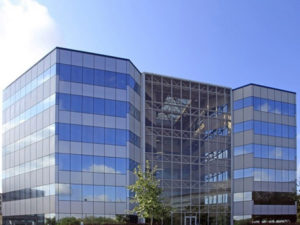
Domenic Carlucci (ABS)
Class societies’ work with alternative fuels, from LNG to methanol and fuel cells, will boost their use within the cruise ship and ferry sector
Class societies are focusing on the use of new alternative power sources within passenger shipping.
Bureau Veritas (BV) global market leader, passenger ships and ferries Andreas Ullrich – appointed to the position in March this year – told Passenger Ship Technology “New technologies such as fuel cells are, I think, the future.”
BV has classed and is classing some ground-breaking alterative power newbuild projects, including Ponant’s icebreaking, LNG-fuelled order; MSC Cruises’ LNG-fuelled mega ships; Brittany Ferries’ LNG-fuelled ferry being built at Flensburger and Seapsan’s LNG battery-hybrid ferries.
The class society “gained a lot of experience” with hybrid technology through the Seaspan project and other operators can benefit from this, as last July BV updated its energy storage systems (ESS) rules with a new chapter providing a framework for electric and hybrid power solutions. The new class notations include power management, power back-up and zero-emission standards.
The notations should encourage wider uptake of ESS to provide both operational and environmental benefits.
Lloyd’s Register is also looking at alternative fuels, including fuel cells and hydrogen. It has taken a leading role investigating using hydrogen within passenger ships as it classed the methanol conversion of Stena Germanica. Commenting on the potential use of methanol, Lloyd’s Register global passenger ship manager John Hicks pointed out the benefits of using methanol as a source fuel for fuel cells. “The benefit of using methanol is that it can be put into a normal tank, it does not have to be a type C or cryogenic tank. The infrastructure is there for the use of methanol, I believe.”
Lloyd’s Register has been working on a number of joint industry projects on fuel cells, including on small ferries. Mr Hicks said “LNG started on small ferries before moving to larger ferries and then cruise ships and I can see fuel cells doing the same thing.” He also singled out inland waterway vessels as being a potential market for fuel cells; Lloyd’s Register is carrying out a fuel cell project within this market. “We are working with the industry to go beyond, to 2025 and 2030,” he noted.
RINA is another class society involved with methanol and fuel cells for the ferry and cruise industry. Like Mr Hicks, RINA executive vice president for marine strategic development, Paolo Moretti sees potential in methanol. He told Passenger Ship Technology “Methanol is just one of the possible alternatives to power fuel cell power generation systems. Methanol is the low-hanging fruit, liquid, ready for use without excessive pressure, with no cryogenic problems, minimising the impact on the payload of the ship (overall fuel tank capacity).”
He said methanol can be a cost-effective alternative marine fuel and is available worldwide through existing global infrastructure. Mr Moretti commented “With the growing demand for cleaner marine fuel, methanol is a promising alternative fuel for ships, to help the shipping industry meet increasingly strict emissions regulations.” Methanol significantly reduces sulphur oxides, nitrogen oxides, particulate matter and black carbon emissions. He singled out the conversion cost to run a ship on methanol is “significantly less” than alternate fuel conversions. RINA has assisted designers and owners in large cruise ship projects to have the system ready for use.
RINA has been actively involved from the outset in activities resulting in the adoption of the IGF Code. Currently RINA – on behalf of the Italian Administration – co-ordinates national experts providing input to the IMO correspondence group on the “Amendments to the IGF Code and development of guidelines for low-flashpoint fuels”.
“The new draft part E and the relevant definitions in part A of the IGF Code are making progress, with a target completion date in September 2018.” The adoption of these long-awaited regulations for fuel cells will be backed-up by the Interim Guidelines for ships using methyl/ethyl alcohol as fuel.
He said the “basic philosophy” of the Interim Guidelines is to provide guidance for the arrangement, installation, control and monitoring of machinery, equipment and systems using methyl/ethyl alcohol as fuel to minimise the risk to the ship, its crew and the environment.
Mr Moretti said “The Interim Guidelines have deep roots into the goal-based approach, enriched by sound engineering principles, current operational experience, field data and R&D.
“Goals and functional requirements, specified for each section, form the basis for the design, construction and operation of ships using methyl/ethyl alcohol as primary fuel for fuel cells on board.”
Meanwhile, the RINA Rules for Fuel Cells installation in ships, issued in January 2018, are consistent with the developing international regulatory framework. Mr Moretti added “Consequently, only minor adjustments may be expected in the future, mostly triggered by the feedback from ongoing R&D projects or newbuilding activities.”
But despite the advances in new alternative fuels, class experts still see LNG as being strong in the industry. Lloyd’s Register has also been very involved in the development of LNG within the passenger ship sector, having classed forerunner Viking Grace, BC Ferries’ dual-fuel LNG ferries and Caledonian McBrayne’s dual-fuel ferries. It is also classing Disney’s LNG cruise ships.
Mr Hicks said “Lloyd’s Register has helped ports understand the risks associated with bunkering – through our energy and offshore side we have helped a number of ports around the world understand the implications and risks of bunkering LNG.”
Mr Moretti said LNG has the best potential to be largely used by all shipping segments, provided the infrastructure is in place, but added that liquid biofuels could gradually replace oil-based fuels. “To power fuel cells, LNG and other low-flashpoint fuels have to pass through an internal reforming process, before or within the fuel cell stack, to transform their higher-chain hydrocarbons to hydrogen,” Mr Moretti explained.
ABS is also boosting its work within hybrid electric power systems – with one of its latest focuses being on the role of supercapacitors. It launched an advisory – Hybrid Electric Power Systems – in February 2017 and continued with the Lithium Battery Guide in May 2017.
The most recent addition to the publication series was the Supercapacitor Guide in November 2017. ABS electrical and controls, corporate technology manager Domenic Carlucci said “Use of supercapacitors is of increased interest when fast energy delivery is required during a peak power condition, such as using thrusters.”
He said ABS produced the guide to provide requirements and reference standards to facilitate effective installation and operation of onboard supercapacitors. Its purpose is to establish safety guidelines for owners, operators, shipyard builders, designers and manufacturers.
Mr Carlucci said “The guide delineates types of supercapacitors, including electrochemical capacitors and lithium ion capacitors, and then defines requirements for design, construction and installation of supercapacitors in marine and offshore applications.”
He noted that supercapacitors have a high-power density and a “fast-charging and discharging process to augment other power sources and can greatly improve the efficiency of traditional energy sources”. Because supercapacitors provide high density short-term power, they could be used to start up a generator or motor on a vessel which could then draw auxiliary power from lithium ion batteries for the majority of its voyage. “These combinations of energy storage technologies provide significant advantages for hybrid deployments,” Mr Carlucci added.

